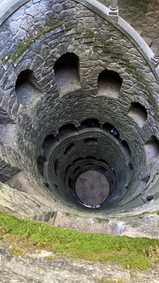Visiting Lisbon Portugal, A first timers guide to the city
- Life Aficionados
- Feb 16, 2022
- 5 min read

Ready for your first trip to Lisboa Portugal? Here is a quick breakdown of the city and some things to add to your list which should help you get started.
Lisbon is a vibrant port city and is the westernmost capital of continental Europe. Lisboa, as spelled in Portuguese, is a name derived from Ulysses from Homer’s story The Odyssey. Once thought to be the most western part of the world, the city was destroyed by an Earthquake in 1755. Built upon 7 hills, it is a city of balconies and views of the Atlantic. The raven is the symbol of the city since there is a folklore that 2 ravens guided a ship through the fog to the city’s port.
Getting around:
Make sure to download Uber, easy to use, and typically you get someone to pick you up in about 5 mins. Taxis are cheap and a great option around town too, but you will need to have cash on hand (Euros). Besides the hills, which really didn’t seem too bad, Lisbon is a really easy city to walk around and the Metro system is very straightforward.
** However, DO NOT get a taxi from the airport to your hotel or hostel though. They have a fixed rate (something I learned the hard way. I stayed at a VRBO when we first arrived in Lisbon, the taxi was like 8 Euros. After returning from the Azores we stayed at a hostel for 1 night and the taxi ride was 25 Euros. I thought I was getting scammed until we saw a sign at the reception. **
Rebuilt after the earthquake in 1755, most of the architecture is still 300 years old which gives the city a great charm. The most notable characteristic is the use of tiles on the outside of the building otherwise known as Azulejos. Typically this is something that you see inside a kitchen or bathroom, in Lisbon the entire building will consist of hand-painted tiles.

A quick rundown of 3 main areas:
Barrio Alto - Music, bars and really good restaurants. This is the “Party” area as many bars stay open late with cheap drinks. Small streets that get so narrow stairs are at the end to take to the next street.
Alfama - The oldest part of the city. Small cobblestoned streets and cafés. This is where you’ll find the famed Tram 28 and is the entrance to Sao Jorge’s Castle. Architecture is a mix of Roman and Moorish influences.
Baixa - Ciudad Baixa “Lower City” is right in the middle of the two mentioned above. Relatively flat, you are able to walk to most areas, it hosts some of the biggest squares in Lisbon like Rossio Square and this area borders the water. Amazing restaurants and you kind of get the best of both sections.
Points of Interest
1) Take Tram 28 to St Jorges castle
Famous pre WW1 trolley
In the Alfama district
(This is the one you always see photos of online)
2) Monument to the discoveries & Belem Towers
a. Both are located along the water, next to each other and just south of Barrio Alto area
b. Monument to the discoveries is idealized around Portuguese’s early exploration
c. Belem Towers – built in the 1500’s it celebrates Portugal’s expedition to and trade with India in the 1400s, it is the official home of the President of the Republic
3) Sintra (see more info below)
4) Pink St
a. Party spot at night. People playing music and drinking on the streets. At the top of any Ingstagrammable list
a. Fun spot with lots of different restaurants. The spot that locals or those living in Lisbon frequent for a night out
6) FADO music – Which is the traditional music of Portugal. Very passionate, with a couple of guitars and someone telling a story (Click here for some history on Fado music)
a. Tasca do chico was recommended by our VRBO host and it didn’t disappoint. This was located in the Barrio Alto district. Try to get a table in the main front section to catch the best view of the show
DAY TRIP SINTRA

Sintra is believed to be on a high-energy, spiritual mountainous range. It was conquered over and over by many cultures: Spaniards, Moors, Germans, Swedes to name a few. Sintra is a 35 min train ride north of Lisbon, but definitely worth a day trip.
1) Buy your tickets online for the Palace de Pena ahead of time. This will have the longest queue if you try and get them there. (see link below)
2) Metro from Lisbon to Sintra (takes about 30 mins from the Rossio station – 6.5 Euros each)
3) Plan on spending a full day (I’d be on the train by 0900)
a. Palace de Pena – a very colorful Palace at the apex of the mountain. Dating back to the 12th c. it acted as a Palace and a Monastery. The red portion of the building is the oldest. (photo to the right)
b. Moorish Castle – Fortress atop the mountain just south of the Palace de Pena
c. Quinta de Regaleria – a neo-gothic mansion built in the 1800s. Privately owned for many years, this place has amazing garden, secret grottos and was a place where the Free Masons used to perform ritualistic ceremonies. It is a beautiful place to walk around but you know some strange things happened here in the past.

d. National Palace de Sintra – the original National Palace where early Portuguese rulers lived.
4) When you get to Sintra, take a ride to the palace entrance!!
a. Literally the best $5 you’ll spend, otherwise it’ll probably be an hour + walk uphill (literally). There will be cabbies outside when you exit the train station. Look to your right.
b. You can walk down from the palace to Old Sintra stopping at the Moorish Castle and Quinta de Regaleria along the way
5) Where the train ends is “New Sintra” // “Old” Sintra is halfway and it is super cute
a. Grab lunch or drink here for sure
b. There is a restaurant in the Palace de Pena as well if you need a small plate and a spot to rest
6) Now for dinner – take an Uber to Cascais located along the coast
a. Lots of shops, amazing restaurants, and great coastal vibes. Grab some food and a couple of glasses of wine.
7) Metro back to Lisbon was very safe (We took the 2200 train) or take a taxi
Food / Drink Suggestions in Lisbon:
Too many great restaurants, really, so many places looked so good. You can literally walk around and stumble onto something. Seafood is the specialty of Portuguese food. But here are a few:
Café Nicolau for breakfast/brunch – In Baxia. Delicious food and great atmosphere. Went here for breakfast and lunch, everything we had was great. (Except the vegan brownie made from a potato yeah I wasn’t ready for that)

Di Marzano – this is one we stumbled on. Small intimate restaurant on a small square in Barrio Alto. Great food cocktails, had a Speakeasy feel.

Vegan Food Project – innovative Vegan restaurant. Taking traditional Portuguese food and making them Vegan. Can you imagine we had Portuguese Sausage and seafood soup!
TOPO – Rooftop bar and restaurant. Great views inside the city at sunset with the sun hitting St Jorge’s castle

SUD Lisboa – Rooftop bar along the water. Very modern, but a great view of the city and river.
Lisbon was a very vibrant city with some of the friendliest people I’ve ever met. The city had a gritty vibe, a working-class feel. Lots of buildings in the Baxia area were abandoned or had graffiti on the sides. However, it felt extremely safe. We walked around the city really late, alleys, dark streets with no issues. Of course, there is always the potential for something to happen but we had no issues. You can get by speaking English in most of the city, after all, Lisbon gets a lot of foreign tourists. But if you start to explore off the beaten path like I always do, make sure to know a little Portuguese.


























link link link link link link link link link link link link link link link link link link link link link link link link link link link link link link link link link link link link link link link link link link link link link link link link link link link link link link link link link link link link link link link link link link link link link link link link link link link link link link link link link link link link link link link link link link link link link link link link link link link link link link link link link link link link link link link link